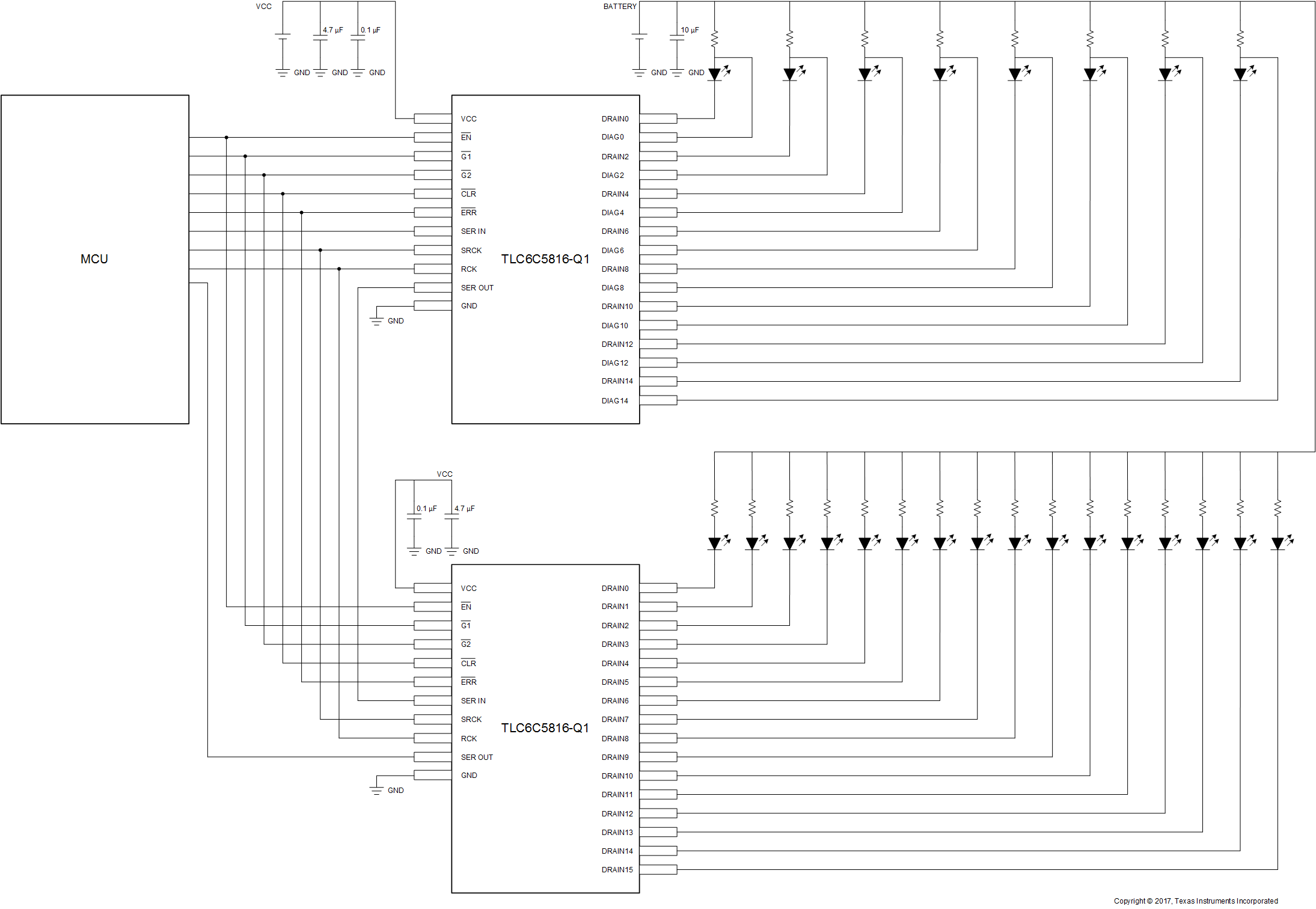SLASEJ5B October 2017 – January 2020
PRODUCTION DATA.
- 1 Features
- 2 Applications
- 3 Description
- 4 Revision History
- 5 Pin Configuration and Functions
- 6 Specifications
-
7 Detailed Description
- 7.1 Overview
- 7.2 Functional Block Diagram
- 7.3 Feature Description
- 7.4 Device Functional Modes
- 7.5 Register Maps
- 7.6 Interface Registers
- 8 Application and Implementation
- 9 Power Supply Recommendations
- 10Layout
- 11Device and Documentation Support
- 12Mechanical, Packaging, and Orderable Information
8.2 Typical Application
Following is a typical automotive cluster application which contains 24 LEDs. Two TLC6C5816-Q1 devices connected in series drive the total of 24 LEDs. The first device drives 8 safety-critical LEDs which require LED diagnostics, and the second device drives 16 general-purpose LEDs which only require simple on-and-off control. An MCU, which controls the two devices through a serial interface and GPIOs, controls channel on-off, PWM dimming, and LED diagnostics functions.
 Figure 20. Typical Application Circuit
Figure 20. Typical Application Circuit